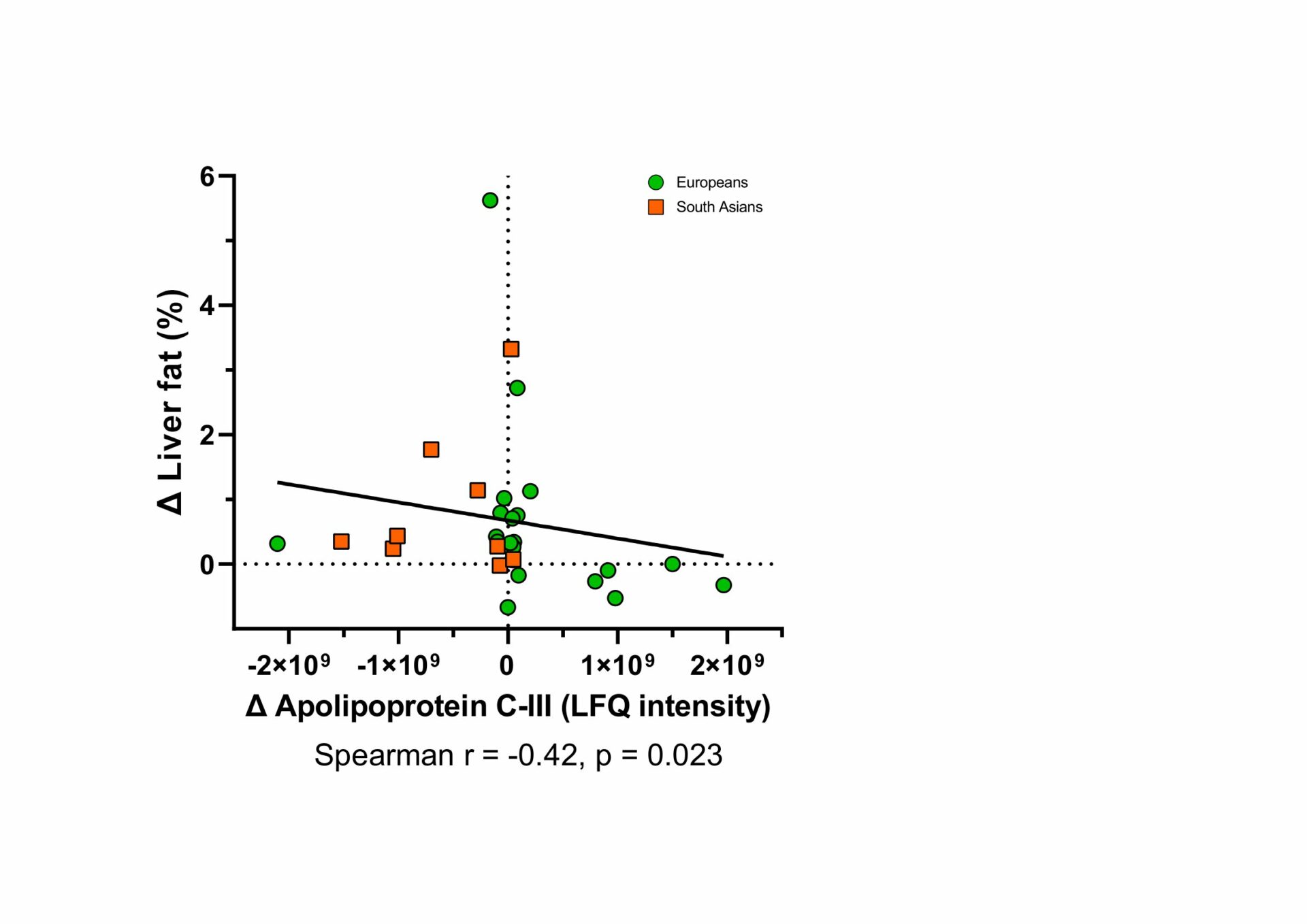Aims
Insulin resistance is known to alter high-density lipoprotein (HDL) composition and function (1). South Asians in the United Kingdom develop type 2 diabetes mellitus younger and at a leaner BMI than white Europeans(2). Our aim was to compare HDL composition and function with weight gain in young healthy white European (EU) and South Asian (SA) men.
Methods
White Europeans (n = 21) and South Asians (n = 14) were recruited with ethical approval from the University of Glasgow and NHS Greater Glasgow and Clyde according to the Declaration of Helsinki. These participants comprised the Glasgow Visceral & Ectopic Fat with Weight Gain in South Asians study (ClinicalTrials.gov Identifier: NCT02399423). Biochemical and anthropometric measures were taken at baseline and after ~7% weight gain over 6 weeks. Body fat distribution was measured by MRI. HDL was isolated from fasted plasma samples using sodium bromide sequential density ultracentrifugation. HDL apolipoprotein AI (ApoAI) was measured by ELISA. HDL cholesterol content was measured by commercial assay. HDL protein was measured by Bradford assay. HDL proteomics was performed by nano-liquid chromatography tandem mass spectrometry and protein levels expressed as a label free quantitation (LFQ) intensity. HDL anti-inflammatory function was assessed by measuring percentage inhibition of TNFα stimulated vascular cell adhesion molecule-1 expression in human microvascular endothelial cells. HDL was dosed onto cells at a concentration of 300 μg/mL apolipoprotein AI. Data was analysed using mixed effects models followed by post-hoc Tukey test. Statistical significance was considered at p < 0.05 and for interaction effects p < 0.15.
Results
HDL ApoAI, cholesterol and protein content were unchanged by ethnicity or weight gain. Of 50 proteins identified on HDL, 12 were higher in South Asians irrespective of weight gain, including apolipoprotein A-IV (EU, LFQ 2.22×107 [1.49×107, 3.53×107] SA, 3.63 x107,[2.60 x107, 4.94 x107], p = 0.011, Median [Q1, Q3]). Five proteins had interaction effects where South Asians and white Europeans responded differently to weight gain, including apolipoprotein C-III, apolipoprotein D, apolipoprotein F and cholesteryl ester transfer protein (CETP) (Table 1). The change in apolipoprotein C-III LFQ intensity post weight gain negatively correlated with the change in liver fat fraction after weight gain (Spearman r -0.42, p = 0.023, Figure 1). HDL anti-inflammatory function did not differ between white Europeans and South Asians or post weight gain.
Conclusion
South Asians have a markedly different HDL protein composition to white Europeans which responds differently to weight gain. However, this did not affect HDL anti-inflammatory function. HDL protein composition may therefore act as a biomarker of systemic pathophysiology, in this case impaired lipid metabolism with weight gain in South Asians. In this light, these findings suggest CETP inhibition and reduced triglyceride transfer to HDL, and increased lipase activity in South Asians. This may favour triglyceride transfer down the lipolytic pathway and into adipose tissue. The association between the change in HDL apolipoprotein C-III and liver fat fraction after weight gain offers a potential mechanism of ectopic lipid overspill in South Asians (3). This may contribute to ethnic differences in type 2 diabetes mellitus aetiology.



